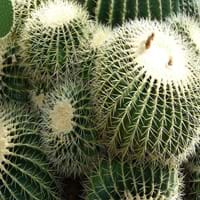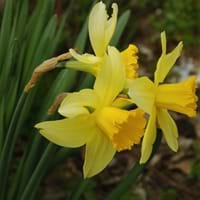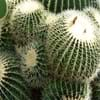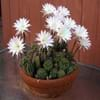Life Span
Perennial
Perennial
Type
Cactus or Succulent
Bulb
Origin
North America, Southwestern United States, Mexico
Asia, Central Asia, Eastern Asia, Southwest Europe
Types
Echinocactus parryi, Echinocactus texensis
Accent, Acropolls, Cassata,Dellbes, Flower parade, Hawera
Number of Varieties
Not Available
Habitat
Desert, Gravels, Sandy areas
Hillside, Open scrub, River side, Rocky areas, Scrubs, Woods
USDA Hardiness Zone
9-15
3-9
Sunset Zone
12, 13, 21, 22, 23, 24
A2, A3, 1a, 1b, 2a, 2b, 3a, 3b, 4, 5, 6, 7, 8, 9, 10, 11, 12, 13, 14, 15, 16, 17, 18, 19, 20, 21, 22, 23, 24
Habit
Oval or Rounded
Clump-Forming
Flower Color
Yellow, Magenta
Ivory, Lemon yellow, Peach, White, Yellow, Yellow green
Flower Color Modifier
Not Available
Bicolor
Fruit Color
Yellow
Not Available
Leaf Color in Spring
Not Available
Green
Leaf Color in Summer
Not Available
Green
Leaf Color in Fall
Not Available
Green
Leaf Color in Winter
Not Available
Green
Leaf Shape
Succulent
Linear
Plant Season
Spring, Summer, Fall, Winter
All year
Sunlight
Full Sun, Partial Sun
Part sun
Type of Soil
Loam, Sand
Clay, Loamy, Sandy
The pH of Soil
Acidic, Neutral, Alkaline
Acidic
Soil Drainage
Well drained
Well drained
Bloom Time
Late Spring, Early Summer, Summer
Early Spring, Late Spring, Spring
Tolerances
Drought, Heat Tolerance, Shade areas
Black Walnut Toxicity
Where to Plant?
Container, Ground, Pot
Ground
How to Plant?
Seedlings
From bulbs
Plant Maintenance
Low
Medium
Watering Requirements
Average Water Needs, Do Not over Water, Never Over-water, Requires watering in the growing season, Water when top layer of soil becomes dry
It cannot sustain wet-feet, Keep the ground moist but not water-logged, Water Deeply, Water when soil is dry
In Summer
Lots of watering
Lots of watering
In Spring
Moderate
Moderate
In Winter
Average Water
Average Water
Soil pH
Acidic, Neutral, Alkaline
Acidic
Soil Type
Loam, Sand
Clay, Loamy, Sandy
Soil Drainage Capacity
Well drained
Well drained
Sun Exposure
Full Sun, Partial Sun
Part sun
Pruning
Remove damaged leaves, Remove dead leaves, Remove dead or diseased plant parts
Cut or pinch the stems, Prune to control growth, Remove dead leaves, Remove dead or diseased plant parts
Fertilizers
fertilize in summer, Potassium
All-Purpose Liquid Fertilizer
Pests and Diseases
Mealybugs, Spider mites
Basal rot, Crown rot, Fire, Leaf spot, Scorch, Viruses
Plant Tolerance
Drought, Full Sun, Heat Tolerance, Shade areas
Drought
Flower Petal Number
Single
Single, Double
Foliage Texture
Bold
Medium
Foliage Sheen
Not Available
Matte
Attracts
Insects, Mealybugs, Spider Mites
Not Available
Allergy
Skin cuts
Asthma, Rhinoconjunctivitis
Aesthetic Uses
Beautification, Landscape Designing, Showy Purposes
Showy Purposes
Beauty Benefits
No Beauty Benefits
Not Available
Environmental Uses
Air purification, Food for insects, Very little waste
Air purification
Medicinal Uses
No Medicinal Use
Asthma, Cold, Cough, Vomiting
Part of Plant Used
Whole plant
Flowers, Leaves
Other Uses
Decoration Purposes, Showy Purposes, Used as Ornamental plant
Showy Purposes
Used As Indoor Plant
Yes
No
Used As Outdoor Plant
Yes
Yes
Garden Design
Container, Houseplant, Rock Garden, Wall
Not Available
Botanical Name
ECHINOCACTUS
Narcissus
Common Name
Golden barrel cactus, Golden ball
Daffodil
In Hindi
echinocactus
हलका पीला
In German
echinocactus
Narzisse
In French
echinocactus
Jonquille
In Spanish
echinocactus
Narciso
In Greek
Echinocactus
ασφόδελος
In Portuguese
Echinocactus
Abrótea
In Polish
Echinocactus
żonkil
In Latin
Echinocactus
Asphodelus
Phylum
Tracheophyta
Magnoliophyta
Class
Magnoliopsida
Liliopsida
Order
Caryophyllales
Asparagales
Family
Cactaceae
Amaryllidaceae
Genus
Echinocactus
Narcissus
Clade
Angiosperms, Core eudicots, Eudicots
Angiosperms, Monocots
Subfamily
Cactoideae
Amaryllidoideae
Importance of Echinocactus and Daffodil
Want to have the most appropriate plant for your garden? You might want to know the importance of Echinocactus and Daffodil. Basically, these two plants vary in many aspects. Compare Echinocactus and Daffodil as they differ in many characteristics such as their life, care, benefits, facts, etc. Every gardener must at least have the slightest clue about the plants he wants to plant in his garden. Compare their benefits, which differ in many ways like facts and uses. The medicinal use of Echinocactus is No Medicinal Use whereas of Daffodil is Asthma, Cold, Cough and Vomiting. Echinocactus has beauty benefits as follows: No Beauty Benefits while Daffodil has beauty benefits as follows: No Beauty Benefits.
Compare Facts of Echinocactus vs Daffodil
How to choose the best garden plant for your garden depending upon its facts? Here garden plant comparison will help you to solve this query. Compare the facts of Echinocactus vs Daffodil and know which one to choose. As garden plants have benefits and other uses, allergy is also a major drawback of plants for some people. Allergic reactions of Echinocactus are Skin cuts whereas of Daffodil have Asthma and Rhinoconjunctivitis respectively. Having a fruit bearing plant in your garden can be a plus point of your garden. Echinocactus has no showy fruits and Daffodil has no showy fruits. Also Echinocactus is not flowering and Daffodil is not flowering . You can compare Echinocactus and Daffodil facts and facts of other plants too.





